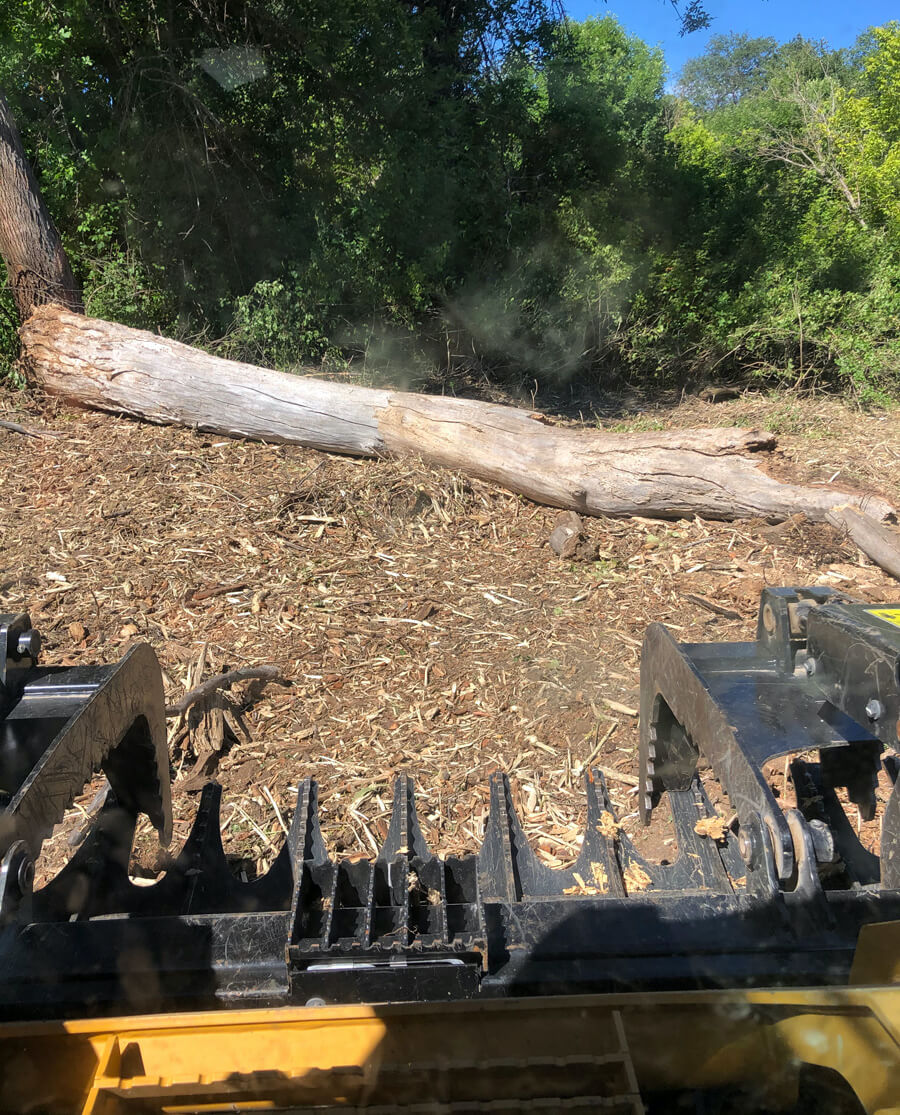Wildfire Prevention & Management Services
Road clearings / fire road management
Brush Removal
Land Restoration
Fuel Reduction
Hazard Tree Removal
Fire Clean Up
Defensible Space
Creating defensible space is essential to improve your property’s chance of surviving a wildfire. It’s the buffer you create between a building on your property and the grass, trees, shrubs, or any wild land area that surround it. Defensible space is also important for the protection of the firefighters defending your home.
FORESTRY MULCHING / MASTICATION
There are many benefits of mastication over conventional methods of vegetation management which include the elimination of material to be hauled away or stacked and burned; a beneficial mulch material is left behind; and stumps are ground flush to ground level. We would like the opportunity to discuss these and other benefits with you and explain how both you and your property may benefit from mastication versus older conventional methods.
Proactive Mulching
Mulching reduces the potential for wildfires by eliminating small leafy plants, fallen or rotten trees, and other fuel sources. If left untreated, these fuel loads increase potential for fire, increase the heat intensity, and serve as fire ladders that enable fire to elevate quickly to the tops of trees which is where a fire can spread most quickly. Mulching can also be used to create a coarse grind finish that can create a more ideal controlled burn.
Reactive Mulching
In addition to proactive thinning of vegetation to mitigate fire fuels, forestry mulching can be used for reactive cutting of lines (fire breaks) on active fires. Larger forestry mulchers leave minimal cleanup requirements and can help reduce the overall costs of active fire mitigation.
Cleanup
After the fire is out and cleanup efforts are under way, tracked forestry mulching machines, mulching attachments, and an excavator with a mulching attachment can provide a top layer of mulch to prevent soil erosion on slopes and minimize water pollution.
Wetlands & Riparian Habitat Conservation
Forestry mulching has become popular among nonprofit riparian conservation organizations, government agencies, hunt clubs, and private land owners in attempts to maintain habitats for pheasants, doves, elk, deer and various other animals. Maintaining an animal habitat encompasses several different aspects: food, water, shelter, and space, and there are many products that can help reclaim and maintain wildlife habitats for these animals.
Food
Forestry mulchers and forestry mowers are often used for removing underbrush and invasive species, such as buckthorn and multiflora rose, in order to allow the rejuvenation of grasses and other food sources.
Water
Forestry mulchers and tree shears can be used to restore water source access that has been blocked due to tree and understory growth, allowing animals to access the water.
Shelter & Space
Mulching can remove invasive underbrush that prevents the growth of the grasses required by certain animals for shelter, breeding, escaping the summer heat, and protecting themselves from cold temperatures.


